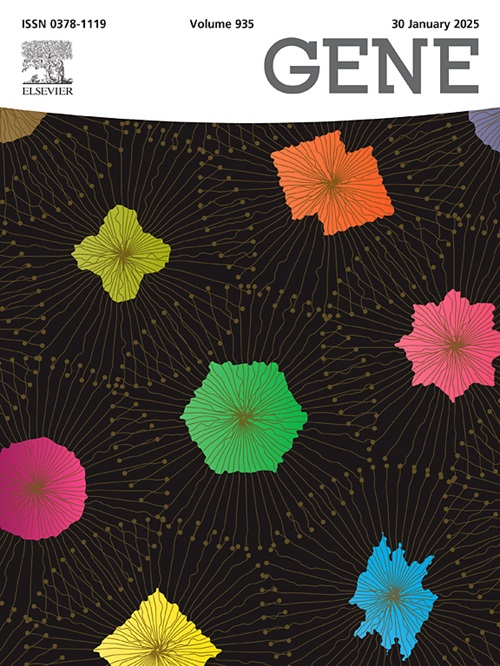Identification of novel QTL associated with whitebacked planthopper (WBPH) and brown planthopper (BPH) resistance in the rice line RP2068
IF 2.4
3区 生物学
Q2 GENETICS & HEREDITY
引用次数: 0
Abstract
This study aimed to identify QTL governing three traits of the resistance against the two planthoppers such as damage score (DS), nymphal survival (NS) and days to wilt (DW) using the 94 RIL population derived from the cross TN1/RP2068 utilizing 125 SSR and 1500 SNP markers. In case of the whitebacked planthopper (WBPH) five major and three minor QTL while for the brown planthopper (BPH) four major and seven minor QTL were identified to be associated with these three traits. Two major QTL, each on chromosomes 1 and 2, were responsible for DS and NS against WBPH accounted for 25% and 16% of the phenotypic variance (PVE). In addition, two QTL on chromosome 6 accounted for 17% (DS), 16% (NS) and one QTL on chromosome 8 accounted for 18% of the PVE for NS, respectively. As no QTL has been reported so far on chromosome 1 flanked by Fbox and RBO markers associated with WBPH resistance, we designed this locus as the novel QTL-WBPH20(t). Against BPH, in addition, to the already reported BPH33(t) gene, two new QTL were identified on chromosomes 1 and 4 accounted for 21% &, 17%, and 37% &, 16% PVE for DS and NS, respectively. Significantly, a single locus on chromosome 1 flanked by RM1247 and SNP1715514 was found to be associated with both the planthoppers resistance. Based on in silico analysis and RNA sequencing data (published earlier), 21 putative candidate genes for WBPH and four for BPH were identified within these major QTL regions.

水稻品系RP2068抗白背飞虱和褐飞虱新QTL的鉴定
本研究旨在利用125个SSR和1500个SNP标记,利用TN1/RP2068杂交获得的94个RIL群体,鉴定控制两种稻瘟病抗性3个性状的QTL,如损害评分(DS)、蛹存活率(NS)和萎蔫日数(DW)。白背飞虱有5个主要QTL和3个次要QTL,褐背飞虱有4个主要QTL和7个次要QTL。两个主要的QTL分别位于1号和2号染色体上,分别占表型变异(PVE)的25%和16%。6号染色体上的2个QTL分别占NS PVE的17% (DS)、16% (NS)和18%(8号染色体上的1个QTL)。由于1号染色体上的Fbox和RBO标记与白斑黑斑病抗性相关的QTL尚未报道,我们将该位点设计为新的QTL- wbph20 (t)。针对BPH,除已报道的BPH33(t)基因外,在1号和4号染色体上分别鉴定出两个新的QTL,分别占DS和NS的21%、17%和37%、16%的PVE。值得注意的是,1号染色体上一个由RM1247和SNP1715514组成的单位点与这两种抗性都有关联。基于计算机分析和RNA测序数据(早前发表),在这些主要QTL区域中鉴定出21个WBPH推定候选基因和4个BPH推定候选基因。
本文章由计算机程序翻译,如有差异,请以英文原文为准。
求助全文
约1分钟内获得全文
求助全文
来源期刊

Gene
生物-遗传学
CiteScore
6.10
自引率
2.90%
发文量
718
审稿时长
42 days
期刊介绍:
Gene publishes papers that focus on the regulation, expression, function and evolution of genes in all biological contexts, including all prokaryotic and eukaryotic organisms, as well as viruses.
 求助内容:
求助内容: 应助结果提醒方式:
应助结果提醒方式:


